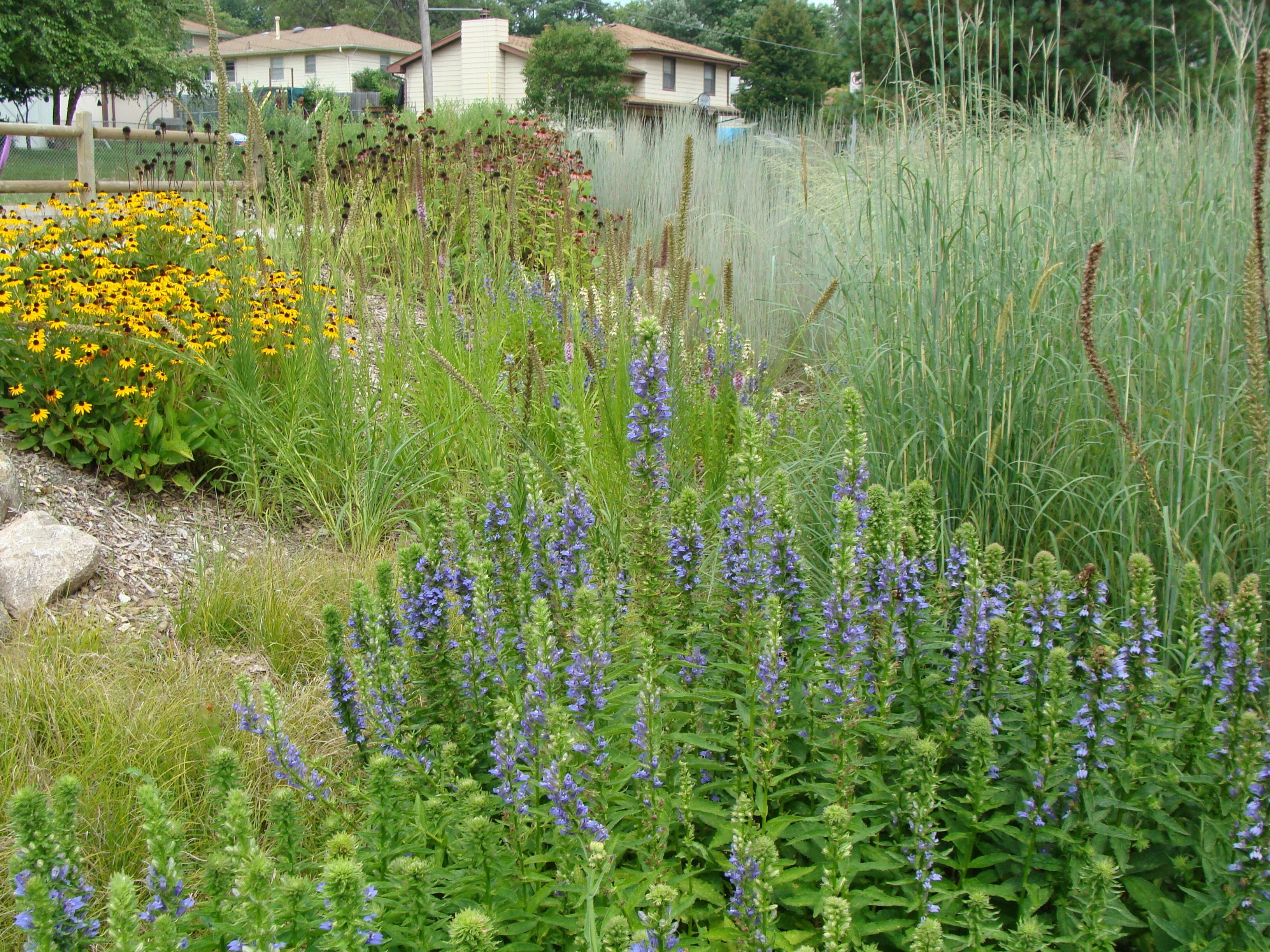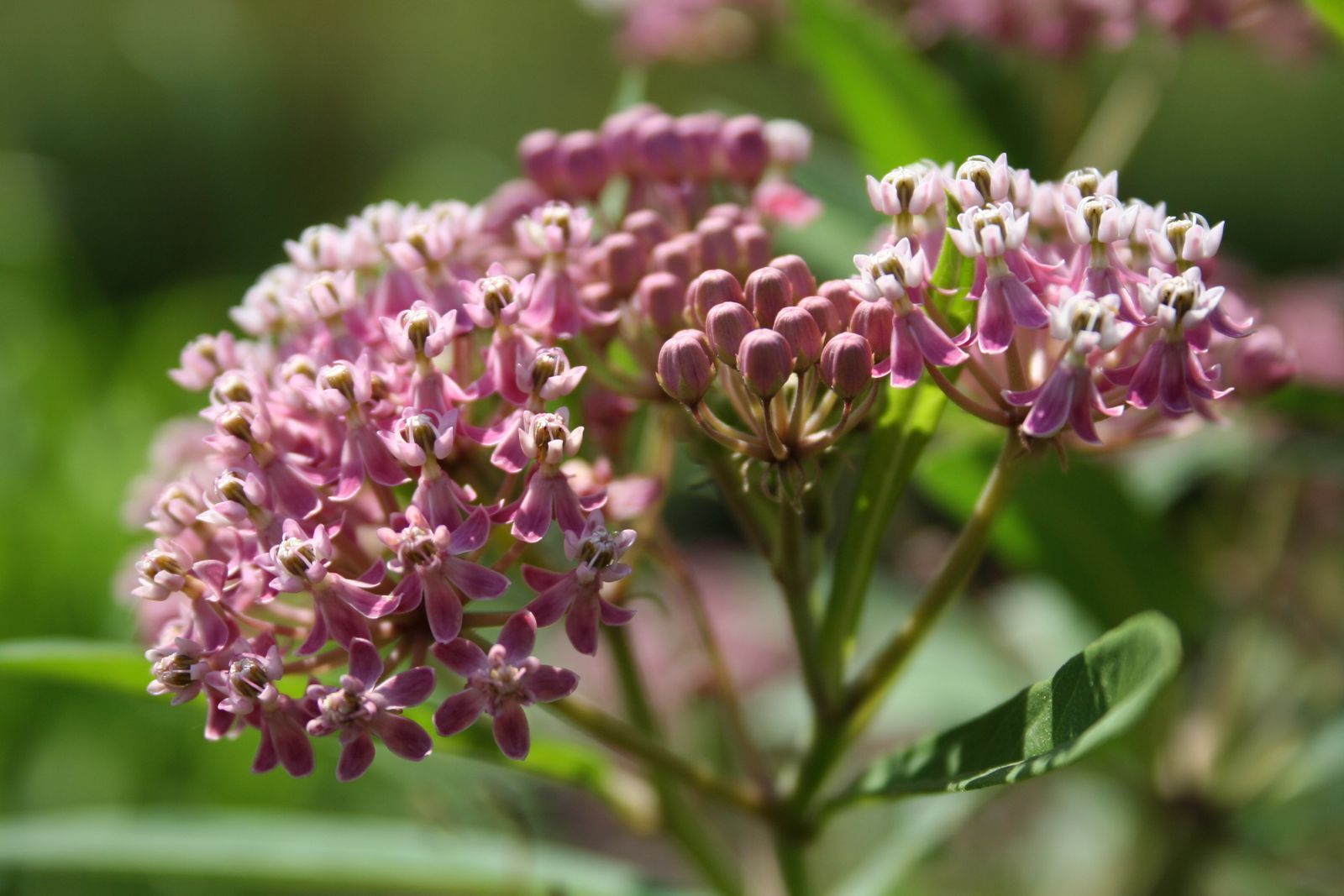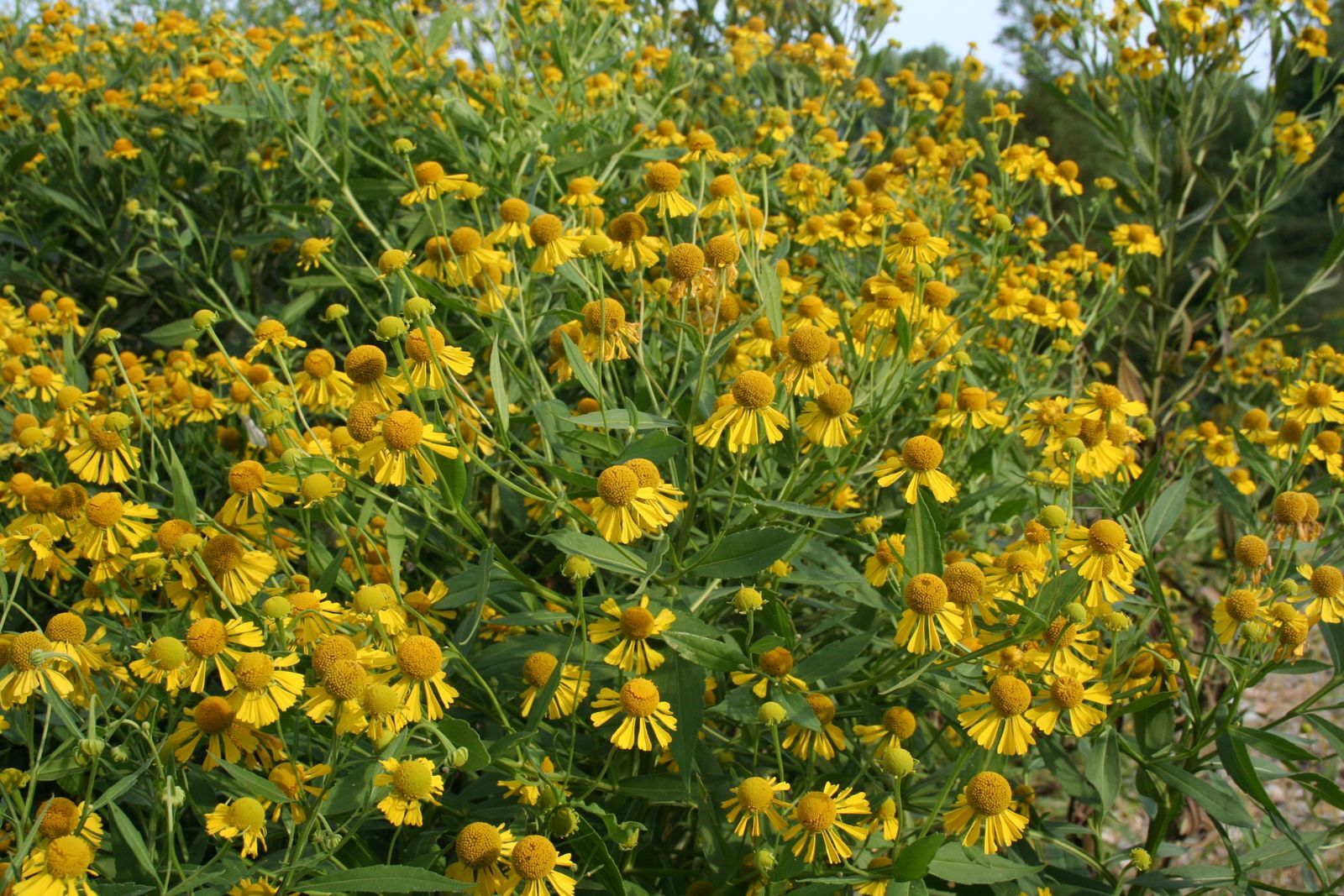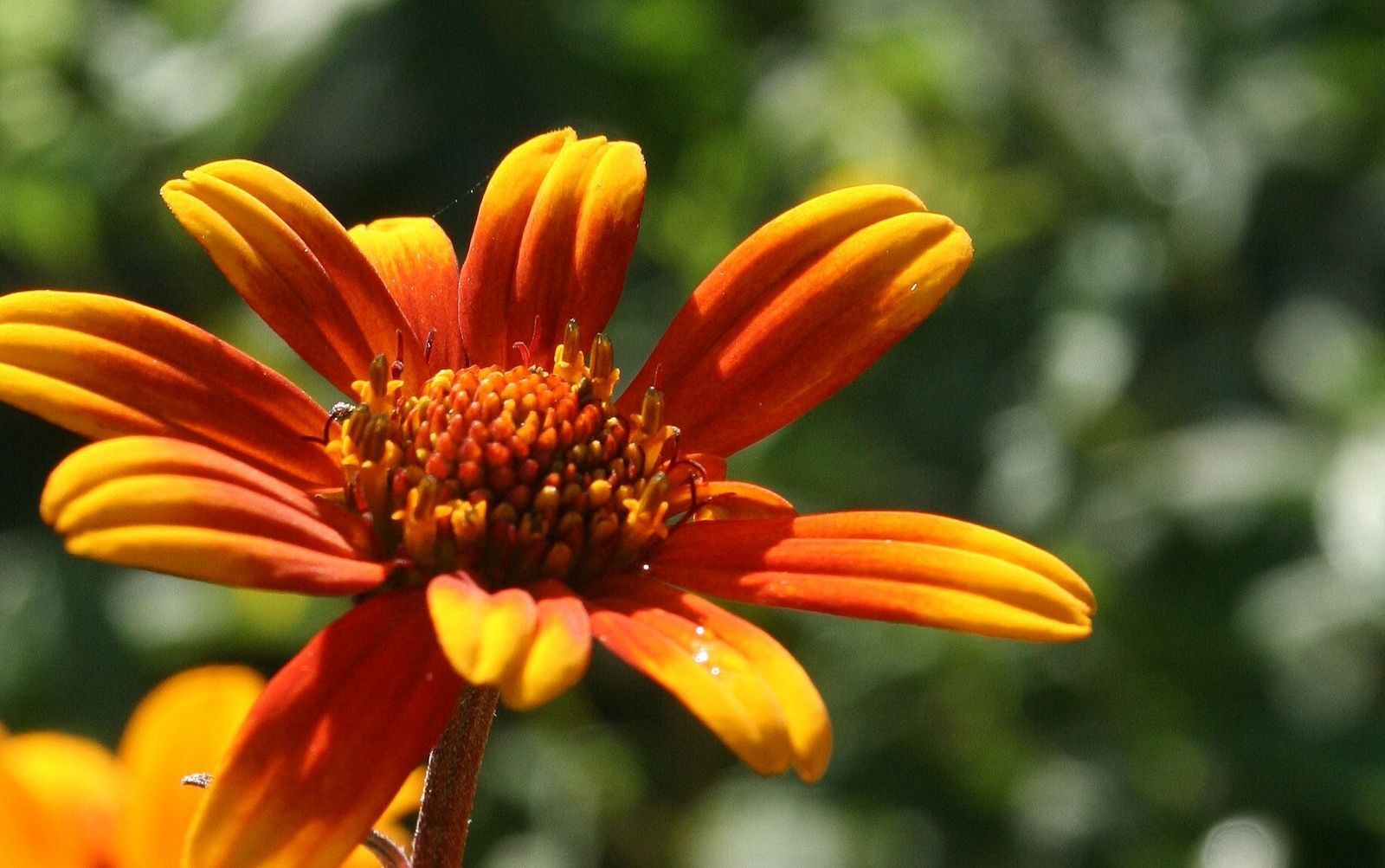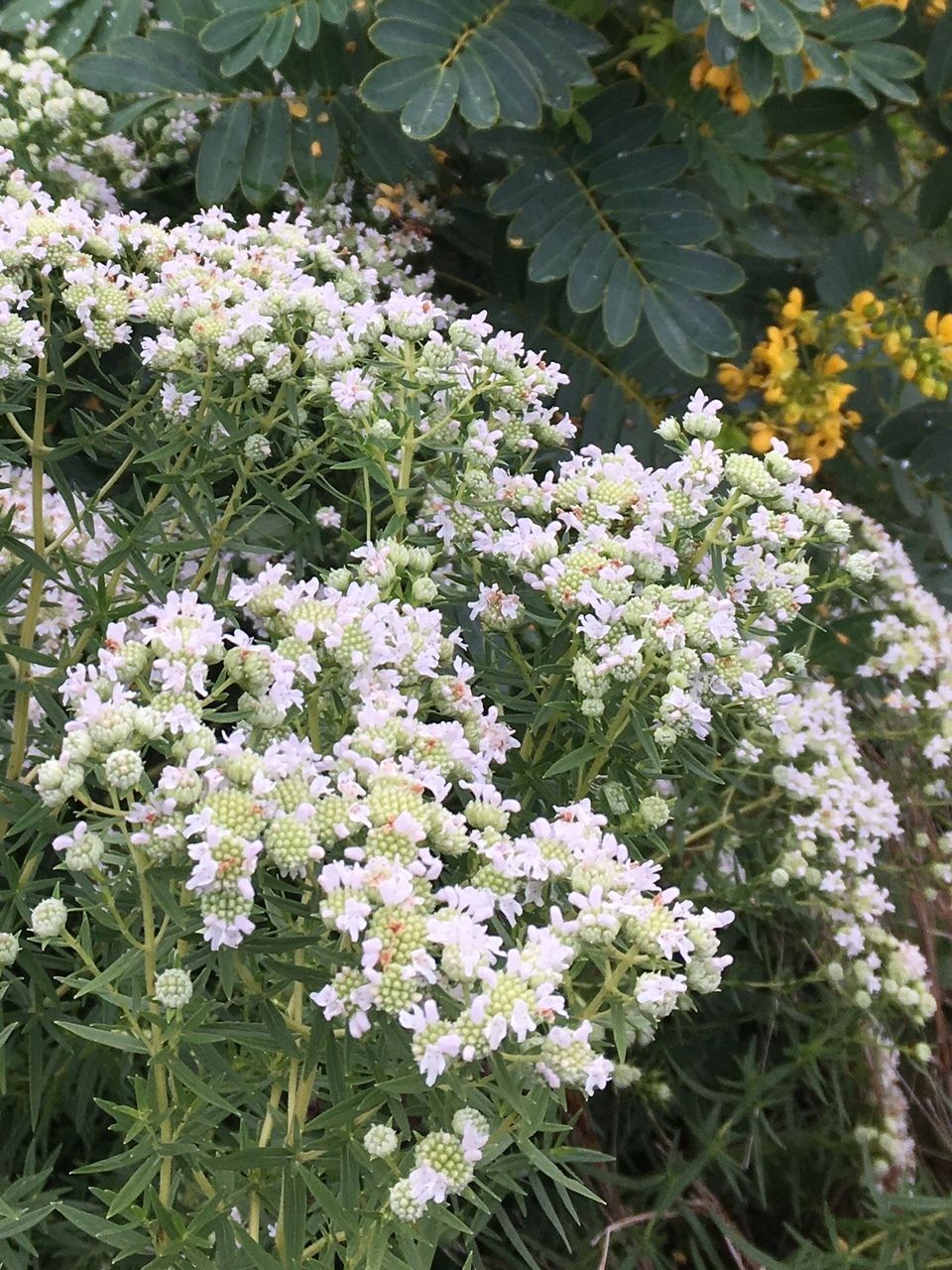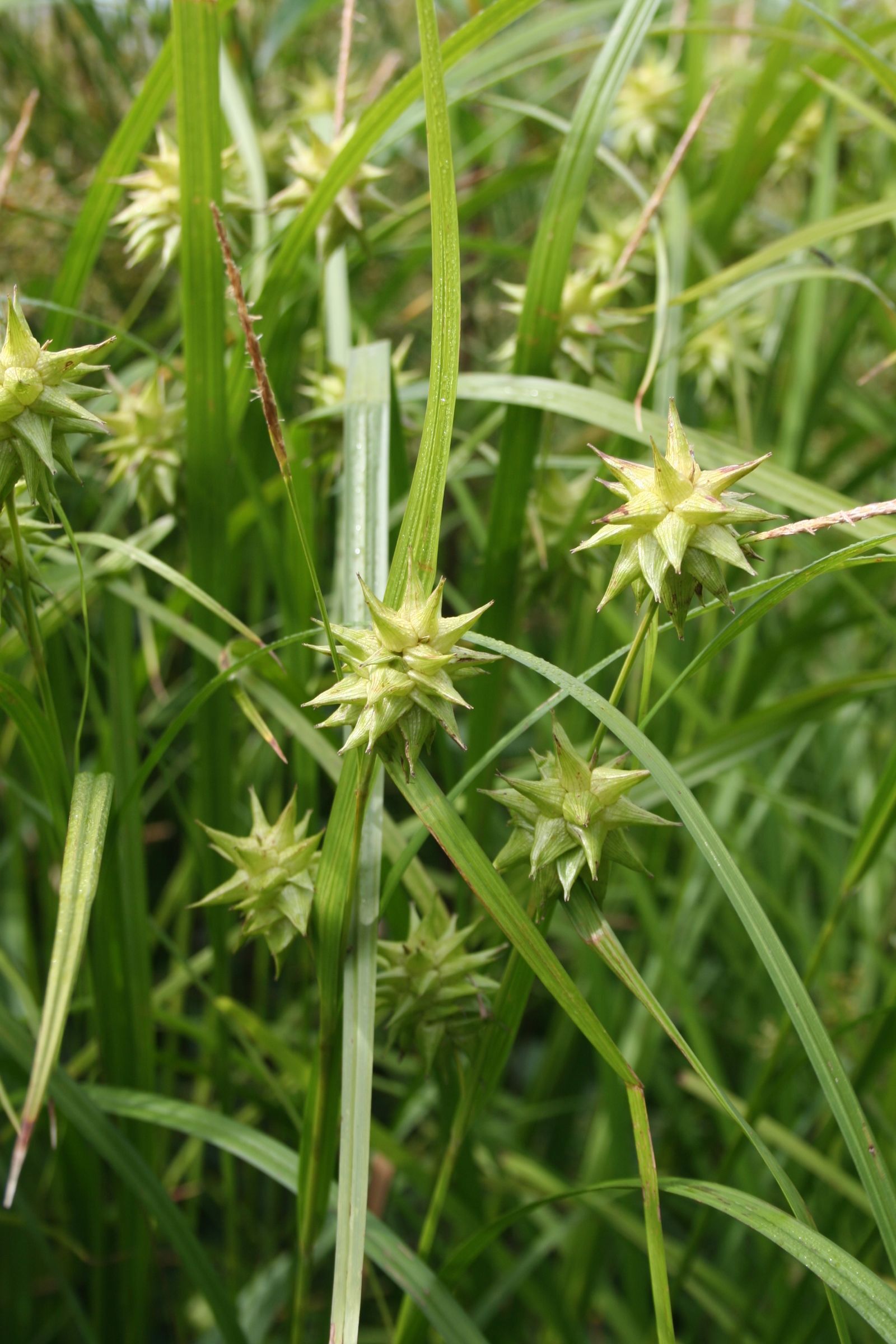Why Make a Rain Garden?
A rain garden catches and holds water, giving it time to absorb into the ground, rather than run into storm drains and nearby stream, ponds and lakes. A rain garden also uses plants to filter out sediment, fertilizers, oil, trash and other pollutants that runoff water picks up as it travels across roofs, driveways, sidewalks and lawns. Because it's dry most of the time and only temporarily holds water, a rain garden is not a pond, water garden or wetland. When properly constructed, a rain garden typically only holds water for 12-24 hours (48 hours at most).
Here are some tips to help you get started on creating a rain garden in your yard:
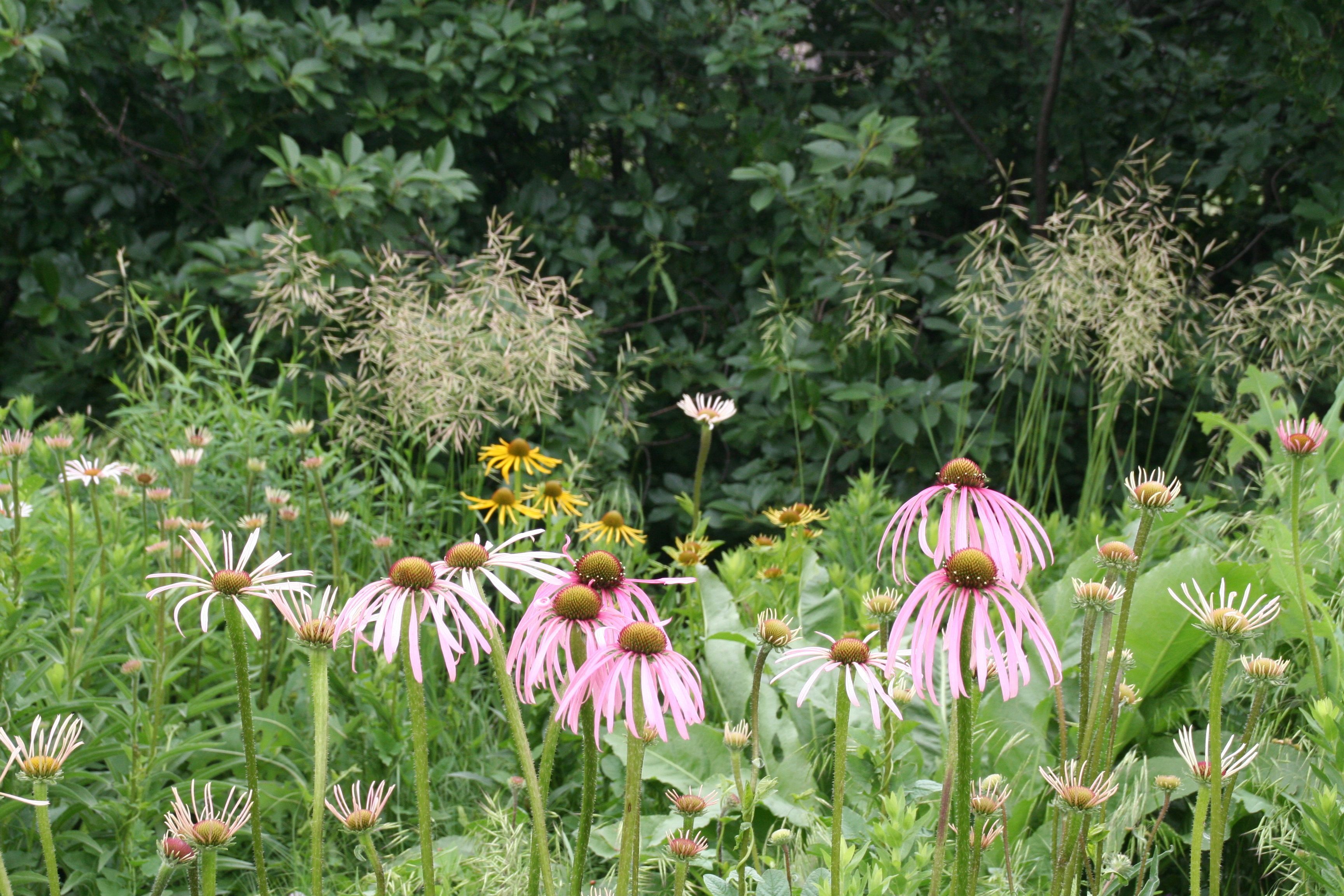
Step One
Decide Where to Place Your Rain Garden
Your rain garden should be placed where it can intercept water as it runs off or onto your property. Take time to watch how water moves through your yard to determine the best spot for a rain garden.
- Don’t create a rain garden in an area that’s already boggy or wet. This spot already has drainage issues. The key, instead, is to plan to intercept the water before it reaches this problem spot.
- Make sure your rain garden is at least 10 feet from your house’s foundation.
- Consider where you want to direct overflow: away from buildings and already-wet areas and toward open space.
- Measure the area’s infiltration rate to determine location based on how slowly or quickly standing water seeps into the soil. Measure the infiltration rate by conducting a percolation test on the area:
- Dig a 12-inch deep, straight-sided hole.
- Fill the hole with water and allow it to drain completely. If it takes longer than 24 hours for the hole to completely drain, choose a different location for your rain garden.
- Fill the hole with water a second time and place a ruler or yardstick into the hole. Take note of the water level.
- Check the water level in one hour to determine the inches of infiltration per hour. However much the water level in the hole has decreased after one hour is your infiltration rate. For example, if you fill the hole to 11 inches and then return in an hour to find the water level is at 9.75 inches, your infiltration rate is 1.25 inches/hour.
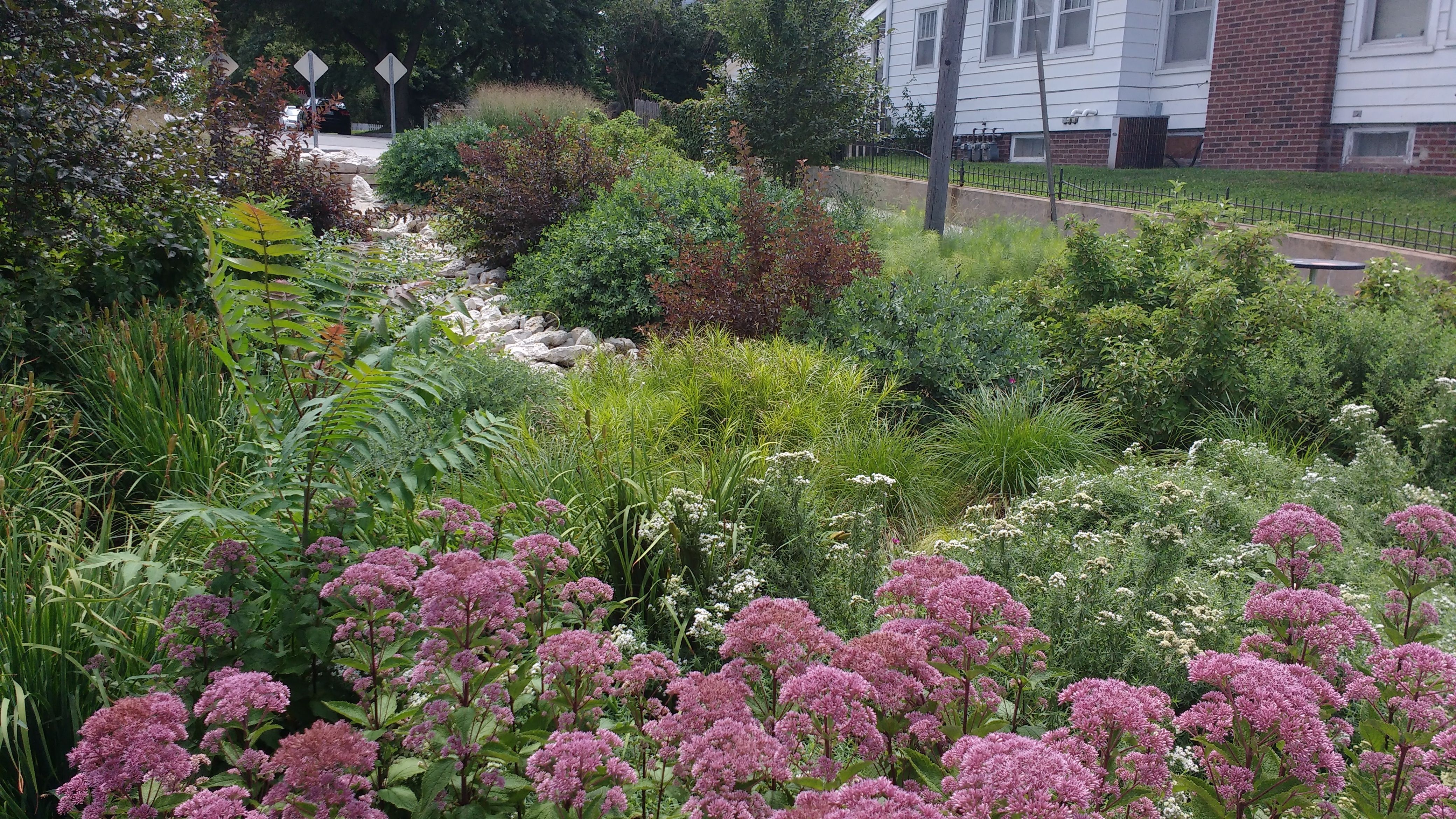
Step Two
Calculate the Depth and Size of Your Rain Garden
100-300 square feet is typical, but your rain garden can also be smaller.
1. Calculate the area of impervious surfaces (surfaces that don't absorb water) that drain into your yard. This would include the roof area that feeds the downspouts in the area you are considering for a rain garden, as well as the driveway, sidewalks, patios, other pavement and compacted turf. You might be surprised to discover how much rainwater runs off your roof alone. In a given year, for example, a roof that is 50 feet x 30 feet has the potential to collect 27,000 gallons of water over the course of an average precipitation year (in southeast Nebraska). That's a lot of water that could be reabsorbed into the soil, rather than draining into storm drains (and subsequently into streams, lakes and ponds).
2. Calculate how deep you need to make your rain garden (this is the rain garden depth). Clay soils with an infiltration rate of less than .5 inches/hour should be dug no deeper than 6 inches to prevent standing water. Siltier soils with an infiltration rate of equal to or more than .5 inches/hour can be deeper -- between 6 and 12 inches deep.
3. Figure out the size of your rain garden.
- Total area of impervious surfaces x rainfall depth (see map below) / rain garden depth = square footage of the bottom of the rain garden.
- For example: 800 square feet (impervious surfaces area) x 1.25 (rainfall depth in eastern Nebraska) / 8 inches (rain garden depth based on infiltration rate) = 125 square feet (this is the flat bottom, not including the sloped sides of the rain garden).
For more detailed instructions on how to calculate the infiltration rate, area of impervious surfaces and rain garden depth, download the Nebraska Extension's Rain Garden Design Guide.
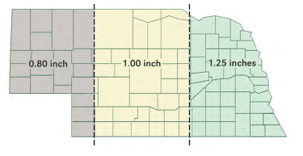
Step Three
Dig Your Rain Garden
- Dig 6-10 inches deep as determined by the depth calculation, leaving a flat bottom with sloped sides.
- If the soil is heavy clay with a very slow percolation, consider digging it 2-3 inches deeper and then digging in about 3 inches of amended soil (good topsoil mixed with compost) to a depth of 6 inches in the bottom of the hole.
- To increase the filtration rate in heavy clay soils, you can also dig 2-3 “potholes” in the bottom of the rain garden that are 8-12 inches wide and 12 inches deep and filled with amended soil.
Step Four
Plant Your Rain Garden
- The plants in the bottom of the rain garden need to be able to sit in standing water for 12-24 hours.
- They also need to be able to handle dry conditions between rainfalls.
- Include a variety of roots (fibrous, deep taproots, rhizomes, etc.) to increase water infiltration.
Try These Plants in the Bottom of Your Rain Garden:
- swamp milkweed (Asclepias incarnata)
- Joe-pye plant (Eupatorium maculatum)
- sneezeweed (Helenium autumnale),
- false sunflower (Heliopsis helianthoides)
- false blue indigo (Baptisia minor)
- Virginia mountain mint (Pycnanthemum virginatum)
- sedges like fox sedge (Carex volpinoidea), palm sedge (Carex muskingumensis) or gray's sedge (Carex grayi).
The sides and upper edges of the rain garden can be treated like any other native plant garden. Choose species for your specific sun, soil and water conditions. Download our Native Prairie Plants Guide or research various pollinator plants on our Resources webpage.
Step Five
Care for Your Rain Garden
As with any other garden, you will need to maintain and care for your rain garden to ensure that it continues to function well.
- Annually cut back plants in the spring.
- Annually remove accumulated leaf debris.
- Monitor to know when sediment needs to be removed.
- Weed regularly throughout the year.
- Replace plants as needed
Want to learn more about waterwise landscaping? Visit our waterwise landscaping resources webpage; or watch our series of five short waterwise landscaping videos.

